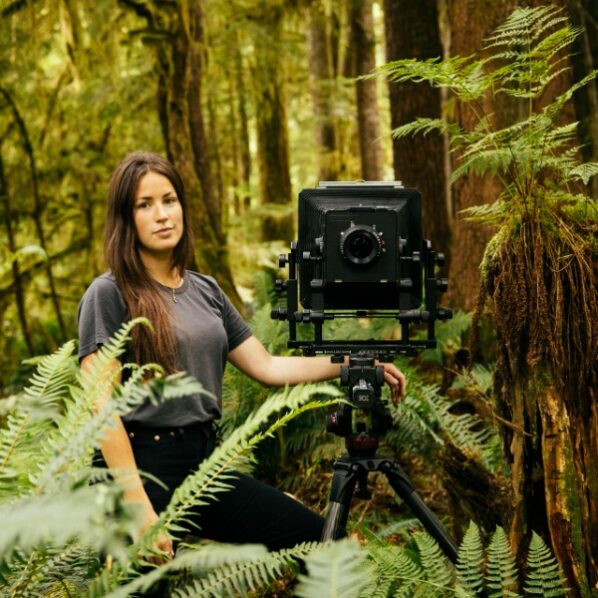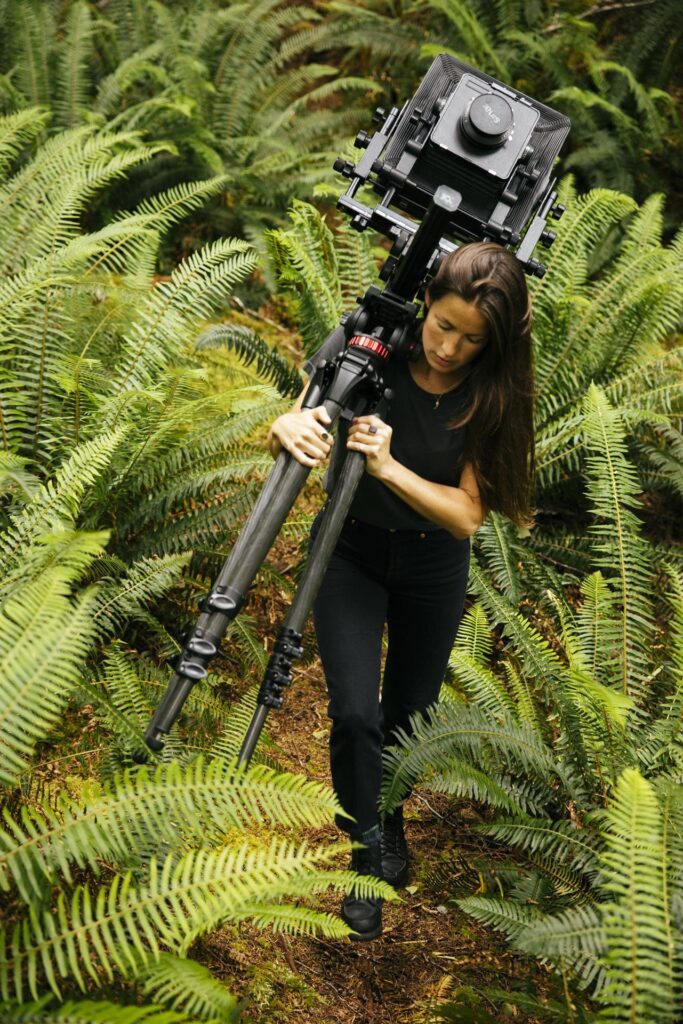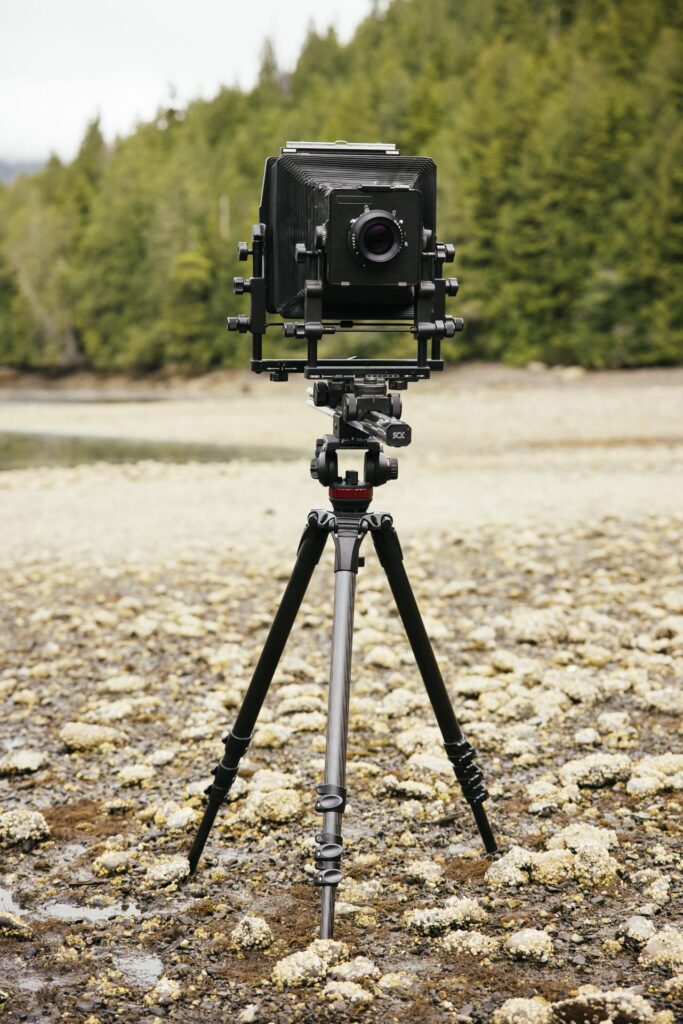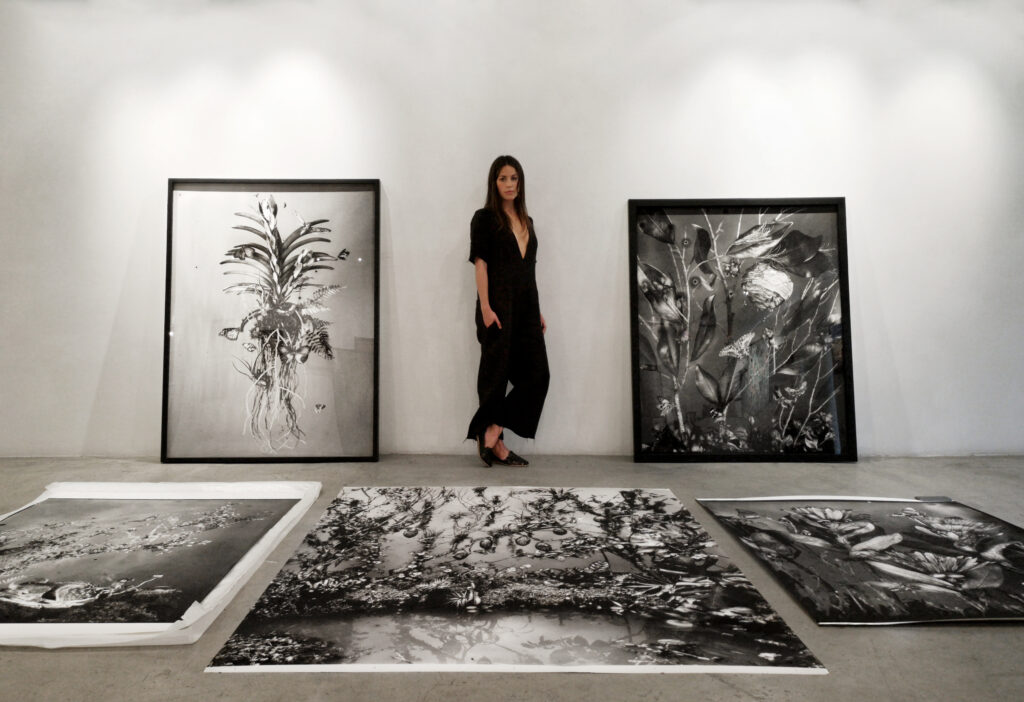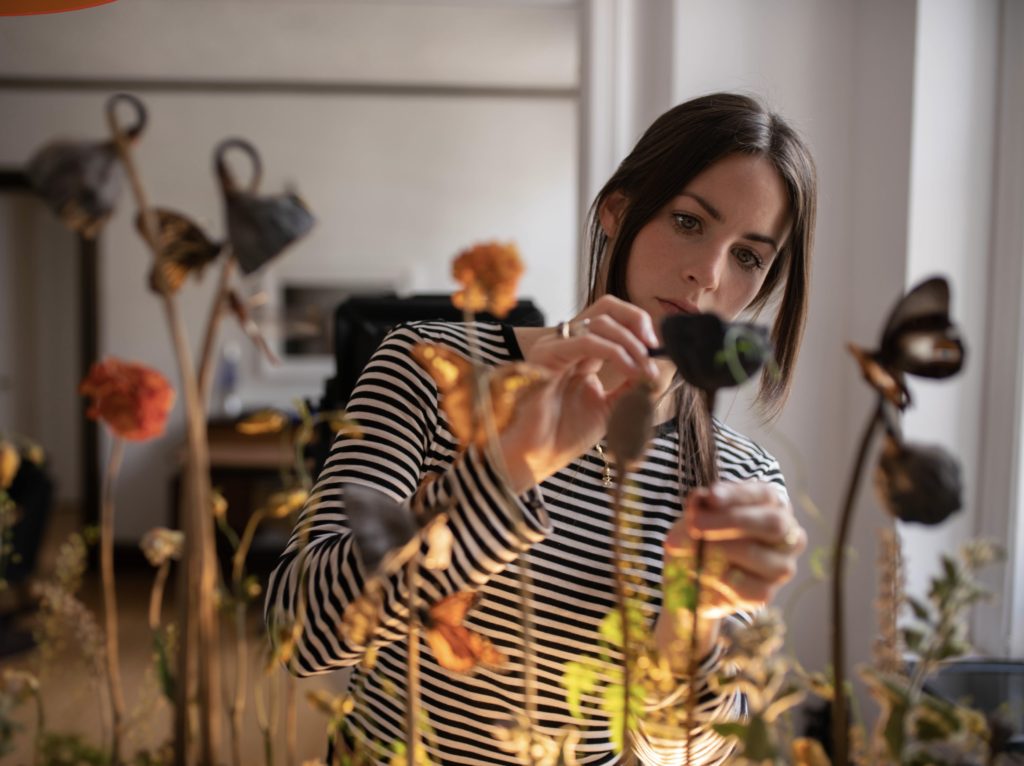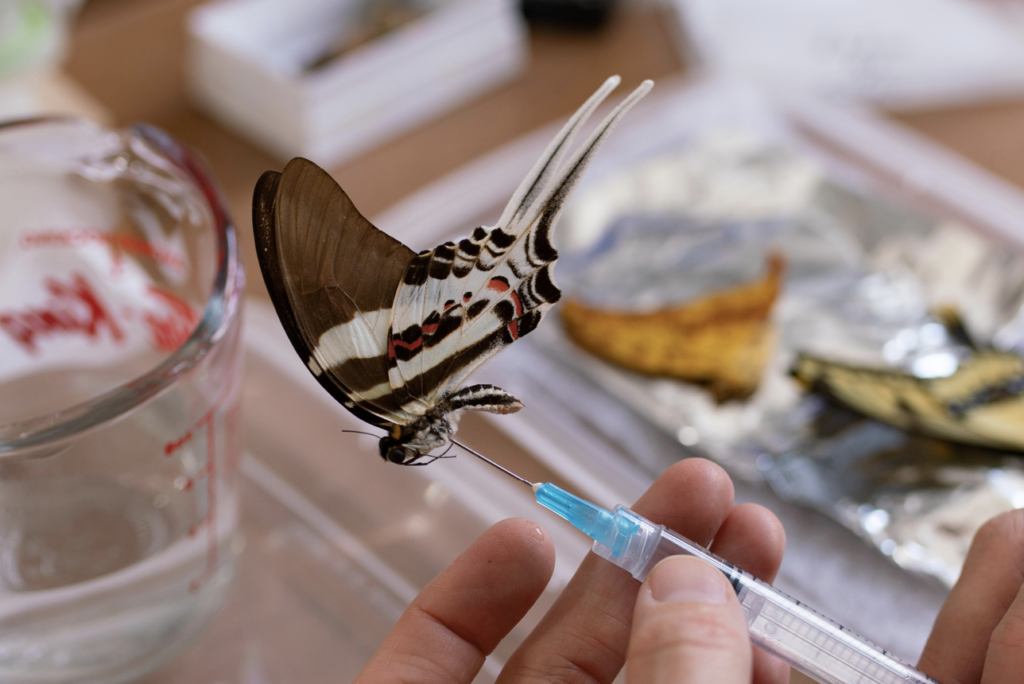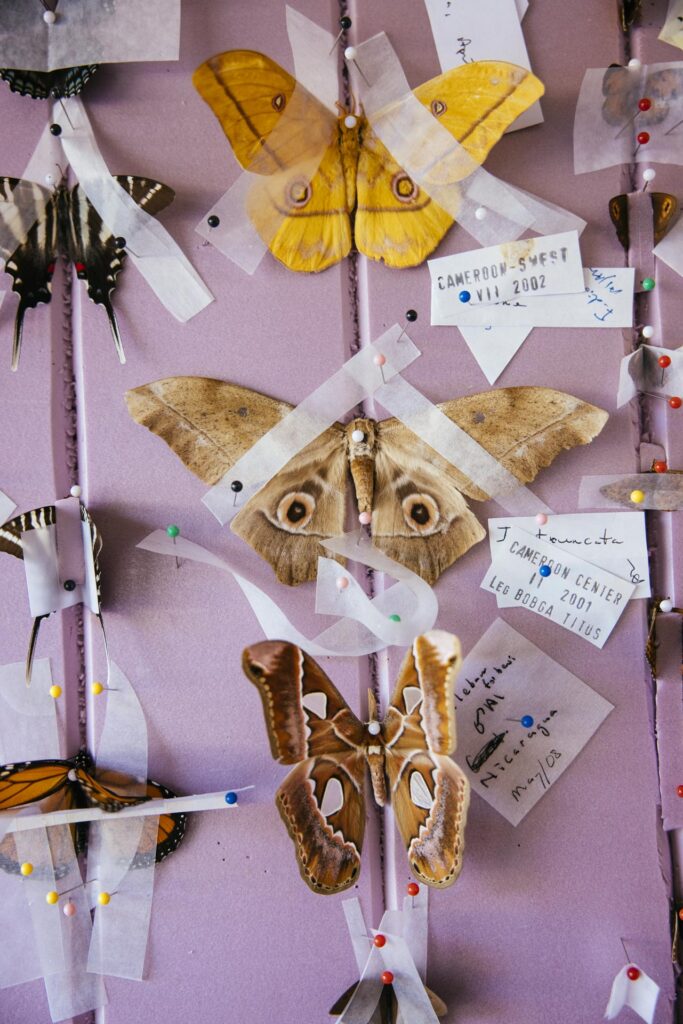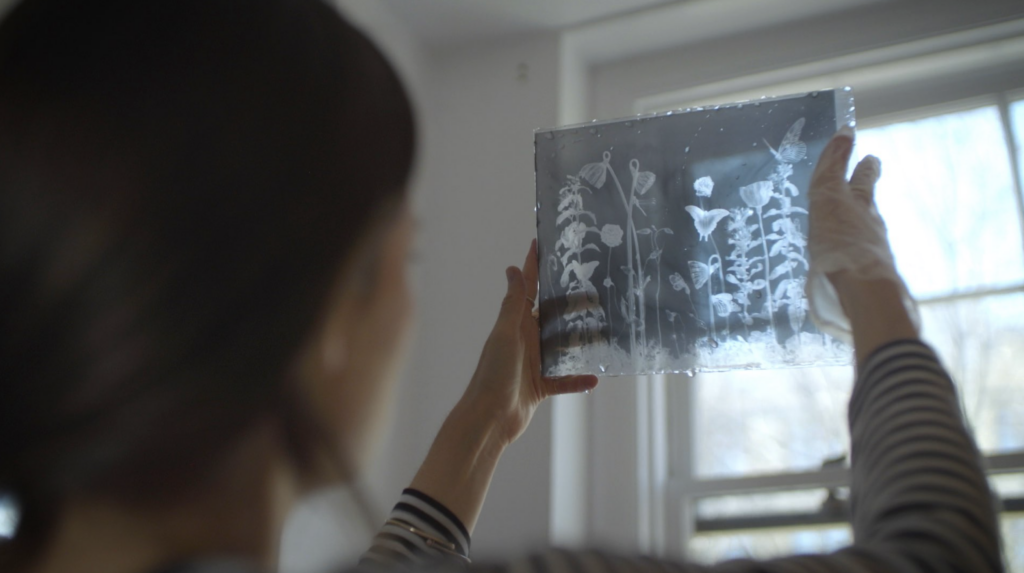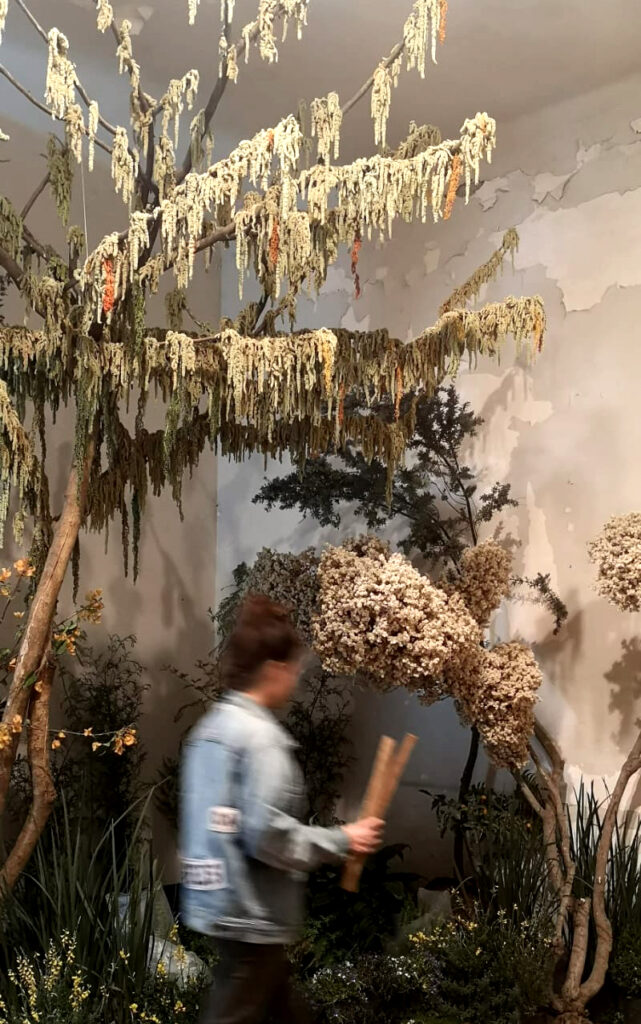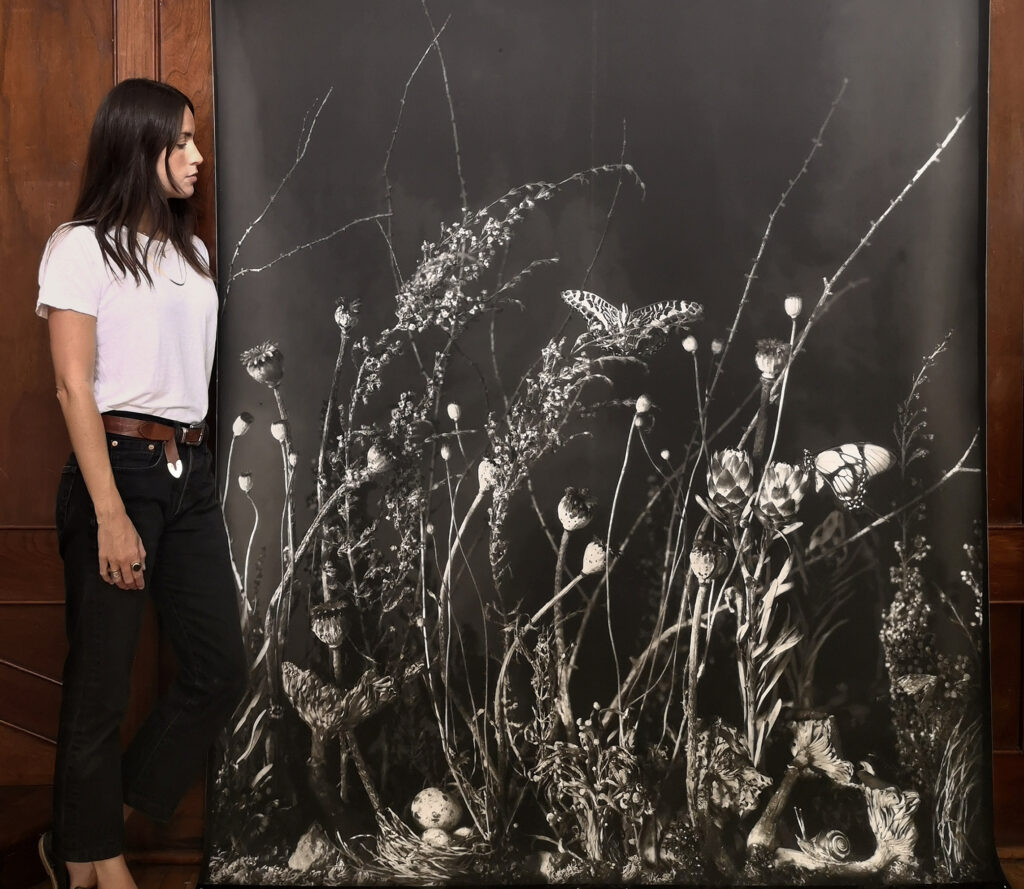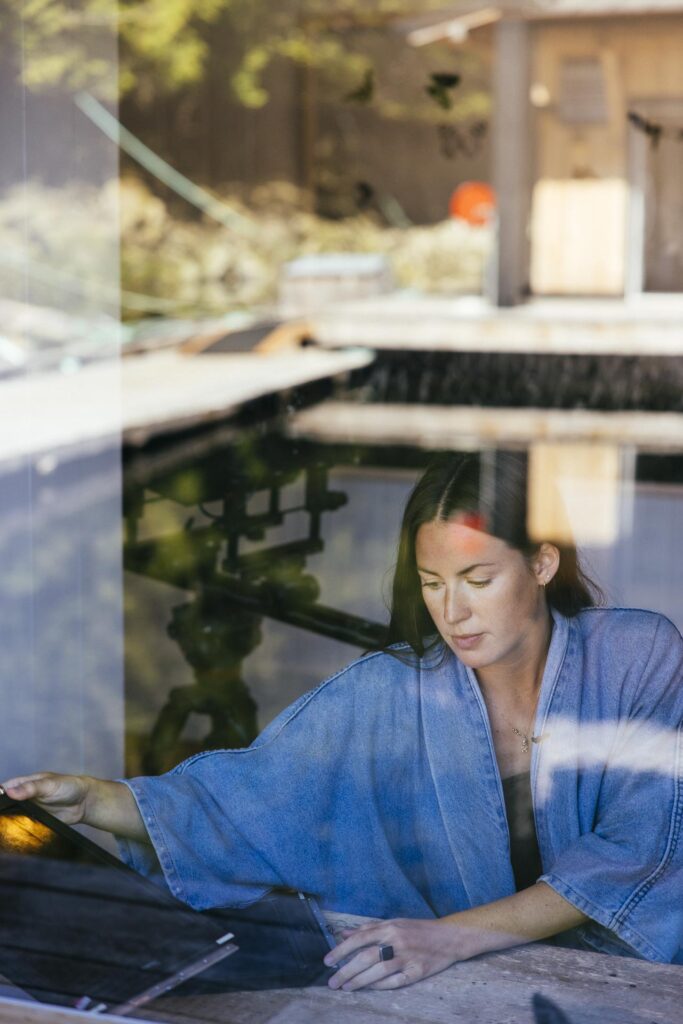This year, for the first time ever, Nimmo Bay is honoured to be hosting an Artist in Residence Program! We have welcomed Canadian artist, Whitney Lewis-Smith to the lodge for our 2021 season and she will be producing a site-specific installation. By introducing this new program, we hope to encourage and support a deeper connection to people and place in wild spaces through a new medium. Whitney will help guide our guests through the process and offer insight of the art found amongst the wilderness.
Introduction to Whitney and Nimmo Bay’s new Artist in Residence Program
As the first artist in residence at Nimmo Bay, I’m working closely with the team to build a curated residency program for future seasons, adding artist’s work and perspectives to the experience of being here at Nimmo. Hopefully this will include added value for guests in the form of experiences with creatives and a gallery space to enjoy artwork with a sense of place from the surrounding landscapes. We’d also like to be able to offer some enrichment to staff members for their downtime here at the lodge. With me that can mean learning any number of photographic processes including cyanotypes, shooting, and developing black and white film, or learning to shoot with a large format camera.
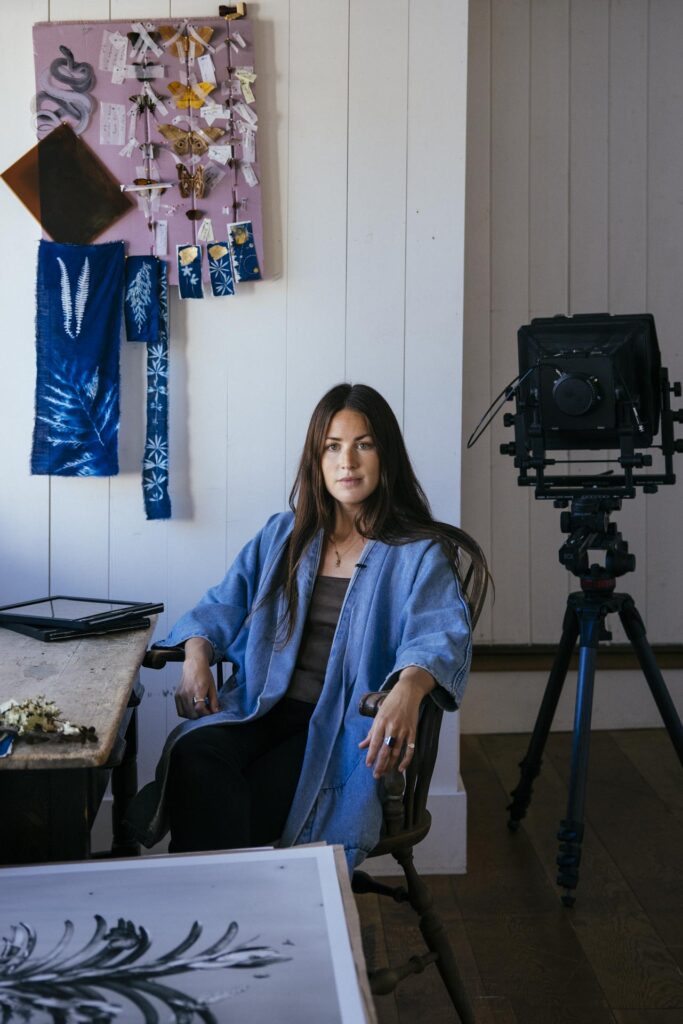
“At Nimmo Bay we are so fortunate to be able to support our guests and our team in creating connections with each other, themselves and with nature. Having an artist in residence who is working to establish their own connection to the place and having the opportunity for others to witness and participate with the creative interpretation of that connection has done so much to enhance the Nimmo Bay experience.”
– Becky Murray
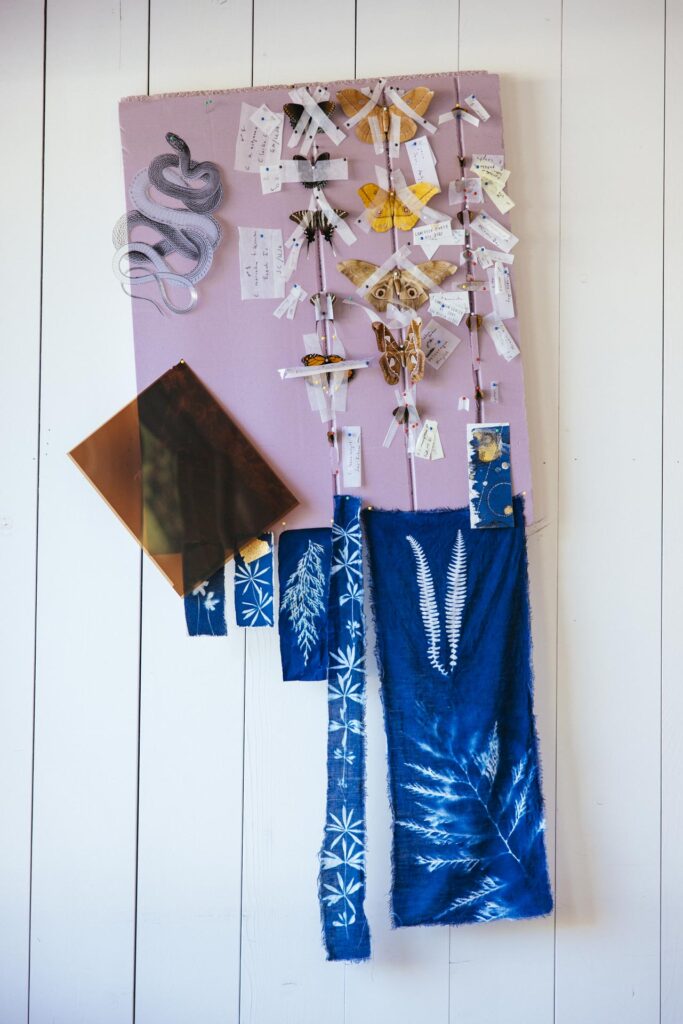
My own projects for the summer are just beginning to solidify. It was important for me to interact with the team and understand the culture and place here before trying to create with Nimmo in mind. I’ll be working with glass plate negatives and building sets using flora and fauna from the surrounding rainforest. Using the glass plates to build an architectural structure has been an exciting part of the plan for myself and the Nimmo team alike, but we haven’t established the fine details just yet. Beyond the usual, I’ve begun creating some large-scale cyanotype prints, some to be stretched and exhibited as photographic paintings, some to act as textiles for the lodge. I’ll be shooting some shots underwater and in the old growth to act as patterns in the cyanotype work, but they may also end up functioning in other ways.
The beauty of a residency is the time and space to experiment and see how it all evolves and comes together unexpectedly.
Days amongst the Great Bear Rainforest
For the first little while getting off the dock was a challenge! Without bear training I can’t set out alone and the radio/log system is all new. I’ve found the forest lovers in the bunch and am now often out hiking before the day starts with guest experiences. The canoe is my friend, and I can explore on my own that way, but I’m looking forward to finding a way to spend some time creating in the woods a little more deeply at different times of the day. Getting the 8×10 camera into the rainforest is a must. Photographing the untouched old growth ecosystems here is something most can only dream about. I’ve been slowly amassing different items from the rainforest and pressing them in books. They’ll become a big part of the textile works in the coming weeks and are also acting as inspiration and reference material for the more elaborate photographs I’m planning to make over the coming months. Today I went out with Irvin Speck and Danielle Brady looking for suitable grizzly fur collection sites along a salmon run. We searched for some artwork Irvin’s father had done along the cliffside of the river and luckily found it, still there some fifty years later. They also helped me collect some bull kelp and medicinal plants for my work and taught me a little about salmon cycles. Hopefully, I can tag along with them a few more times, they hold a wealth of knowledge about the cultural history and ecosystems around Nimmo Bay.
Finding Inspiration Everywhere!
If I had to pick one thing it would be the sense of time and history that the land and rainforest evoke. There is a real sense of walking into a time capsule where not much has changed for thousands of years. The giant tides with the lunar cycles, the waterfalls changing daily with the rains, the trails worn into the forests by the animals that call this place home… it’s like stepping into a time capsule.
Artist Q & A
Tell us a bit about yourself and how you started on your journey:
Years before I ever seriously picked up a camera I studied sculpture and drawing at Concordia University, then became a master scuba diver trainer and travelled quite a bit doing fieldwork on marine science bases around the world. I had always searched for ways to learn about ecosystems and biology, but knew that if I went into the world of scientific research full time I’d likely end up writing papers or in a lab most of my life. I came to photography as an aid to help classify unusual specimens I was recording in the field. From there I decided I wanted some formal education and dove into photos full time at The School of Photographic Arts Ottawa. Being landlocked and in a city for the first time absolutely contributed to the work I began to make. I intended to use my skills for documentary work but found something much more fulfilling within studio and darkroom techniques.
Building sets in a controlled environment and shooting with a large format camera allowed me to tell more elaborate stories about the ecosystems I care so deeply for.
Over the last decade and a half there were definitely years where I felt completely lost and unsure of the path I was on. The puzzle pieces weren’t fitting together and I was tired by every new thing I threw myself into. I could never have anticipated ending up in this unusual sort of job but, being someone who’s at home with constant change and learning, it does make sense that I carved out my own niche somewhere between science, photography, and sculpture. This work is so authentically all of the things I love at once. The meandering path allowed me to build an invaluable roster of friendships and connections with entomologists, taxidermists, experts in art history and symbolism, and a plethora of creatives and scientists just as fascinated by the natural world as I am.
How has your childhood shaped your work?
My formative years were spent in a small enclave within national park land in rural Quebec, just outside of Ottawa. As an only child with parents busy running their own businesses I spent a great majority of time immersed in the forests and river systems on my own. With the love we all had for nature it’s no surprise that our home became the neighbourhood rehabilitation centre for injured wildlife. We had three racoons, a snapping turtle with a broken shell, and even a skunk with a broken leg at one point. There were bears in the apple trees most summers, lynx wandering our trails in winter, and great horned owls gazing at their reflections in our windows. My father a graphic designer and my mother a portrait painter, both incredibly prolific creatives, travelled frequently for unveilings and award shows. Living in such a rural setting with parents obsessed with good design, literature, and architecture was an unusual juxtaposition that left its mark on me.
Who or what are your leading influences?
As a photographer I wouldn’t say I’m inspired by photographs very often. Dutch golden age painters, particularly Otto Marseus van Schrieck, continue to feed me no matter how many times I revisit them. Pre-photographic research drawings documenting plant and animal specimens are an ever expanding obsession. Mythologies, poems, and stories from history that can be reinterpreted in contemporary ways to help us situate ourselves in history are also always being added to my library.
Collecting, sourcing, and building your elaborate sets and small ecosystems – can you take us on your journey as you bring these worlds to life?
My studio practice shifts dramatically depending on individual projects. Essentially I build detailed nature scenes, sometimes massive, sometimes tiny. I usually do this in my studio and then photograph the sets with an 8×10 view camera and glass plate negatives I make in my darkroom. Once in a while I’ll build interactive installations in galleries or other spaces that the public can wander through and immerse themselves in. The shooting of my projects is actually a relatively small part of the work, the great majority of my time is spent sourcing props and materials. For the last decade my studio has been in the heart of Mexico City so at least one day each week is spent in the flower markets (the largest ones in North America) scouring for unusual flora and making sure not to miss any seasonal bounty. Whenever possible I head out into the forests around the city to forage my own plants and landscape materials. I also grow a great deal of plants when I need specific items. Between the growing, drying, pressing, and maintaining of cut plants the studio tends to look like a wild jungle most of the time. For insects and other specimens I work with a small team of entomologists and herpetologists from UNAM University that have me along on research expeditions. I lend a set of hands with their fieldwork and in turn they give me access to specimens that are damaged or extras. I’m also constantly sourcing antique collections of insects and animal specimens via museums, private collections, or online auctions. It’s a never ending hunt to source sustainably that I love. When I can’t find something specific for a project, I sometimes build small replicas using sculpting clay and paint. It’s important that the viewer can’t tell the difference between what’s real and fake so those models will often take me weeks to perfect. The process of sourcing and planning is in constant flux with each upcoming exhibition. Sometimes I’m building reflective ponds for models to swim in and even the ceiling has to exist as part of the construction, other times it’s tiny underbrush ecosystems that fit on a tabletop. The sketching up of new tableau ideas, sourcing, and building is an ever moving cycle.
After you have collected your specimens and crafted your sets – can you tell us about your process?
Once my sets are almost complete I start to prepare 8×10’’ glass plate negatives for shooting. They need to be carefully washed and coated with layers of chemistry so this takes about three days with drying time between each layer. Depending on how I pour the plates I can add ripples, bubbles, and other textures that will become part of my final images. It’s exciting choosing particular negatives for each scene and seeing how they emerge in development. Once I’ve produced a series of negatives I head to the darkroom again to make contact prints. These initial prints are scanned and the final post production is done in photoshop. This workflow allows me to create prints with unparalleled detail on a huge scale, which is important since I want the viewer to feel as if they can walk into my scenes when they stand with them.
The term ‘Biophilia’ – can you explain it us and what it means to you?
Biophilia is a term that was coined by renowned psychologist Erich Fromm and popularized by Harvard Biologist Edward O. Wilson. It describes how humans possess an innate tendency to seek connection with nature and other forms of life. Each set I build tells its own individual story about our interaction, relationship, or impact as a species on the natural world.
Though themes change and my artistic exploration evolves constantly, it’s always about Biophilia and finding visuals that engage viewers with nature in a way that’s unexpected and new to them.
